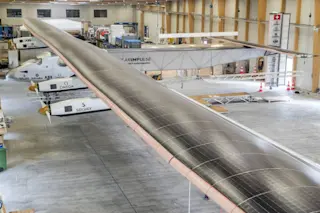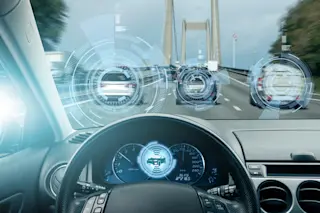Solar Impulse 2, the single-seater solar airplane unveiled today. Courtesy Solar Impulse The world’s most advanced solar plane, the Solar Impulse 2, was unveiled in Payerne, Switzerland, today. The plane, which has been in development for 10 years, is the successor to a solar plane that flew across the U.S. last summer. The plan is for Solar Impulse 2 to fly around the world next year using nothing but sunlight for power — the first solar-powered plane to accomplish that feat.
Solar Impulse 2 builds on its predecessor in a few important ways: It has a bigger wingspan, a bigger cockpit — to keep a pilot comfortable for five days and nights in a row—and uses lighter materials. Despite its enormous size – the plane has the wingspan of a 747 – Solar Impulse 2 is somehow insubstantial. The tops of its wings are made up of glued-together solar cells. ...














